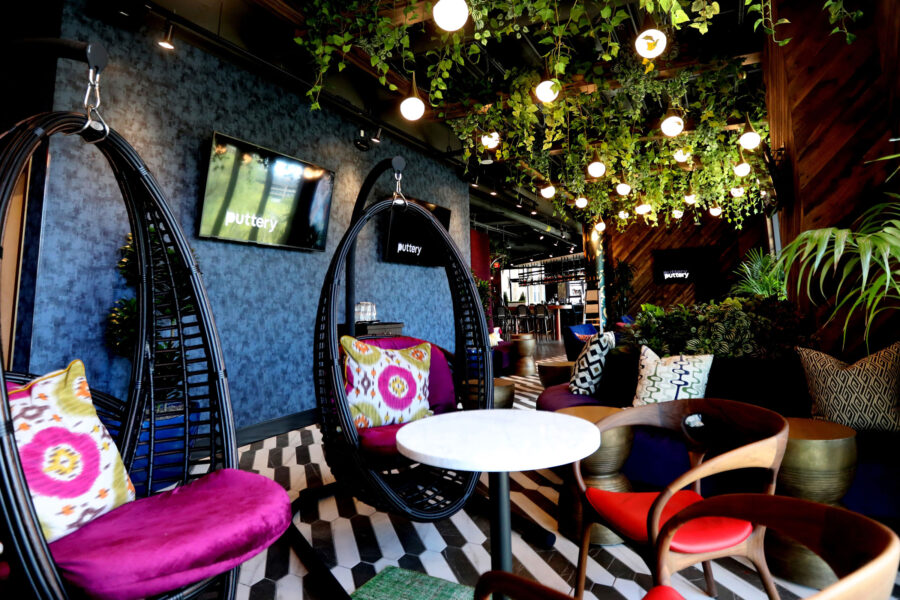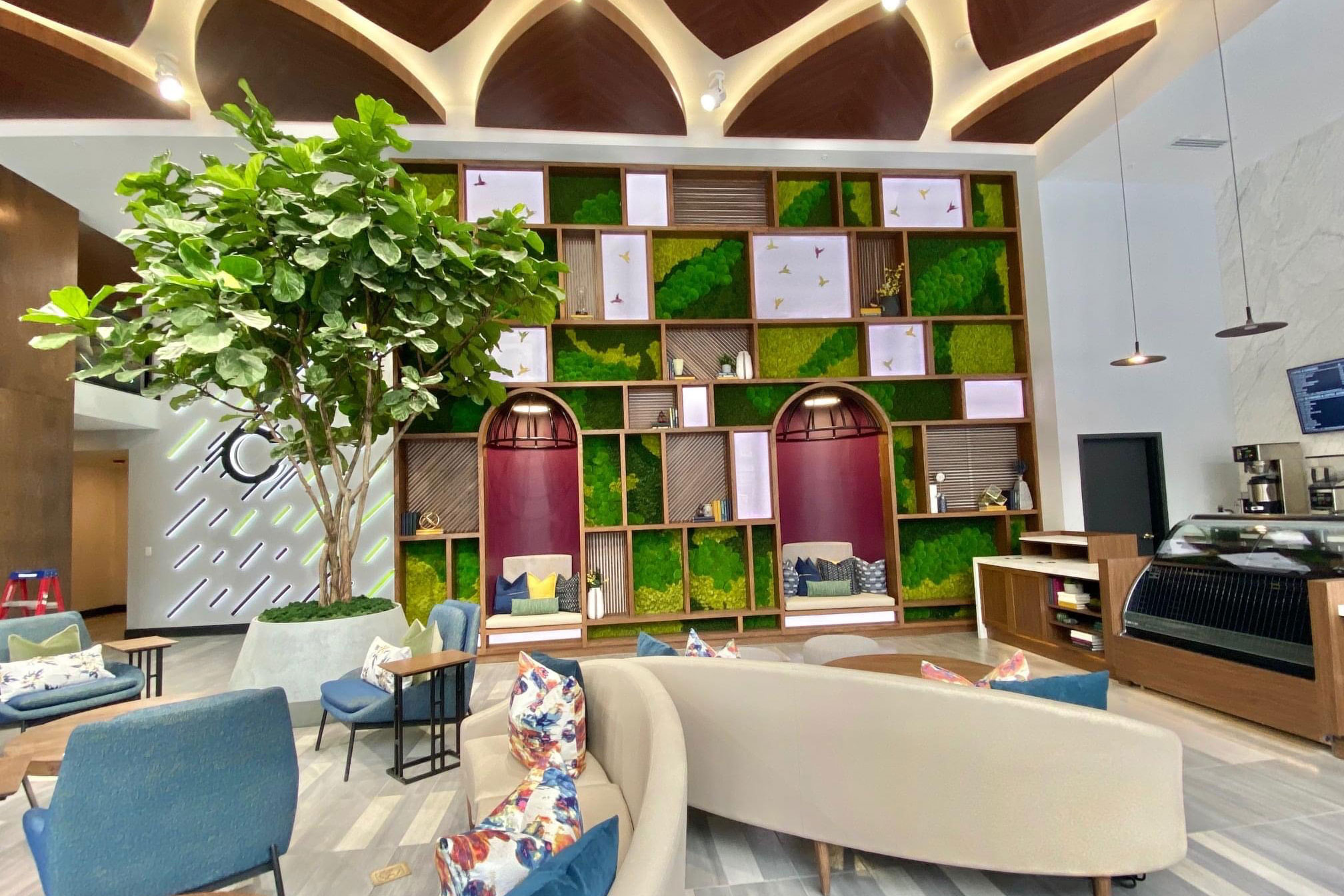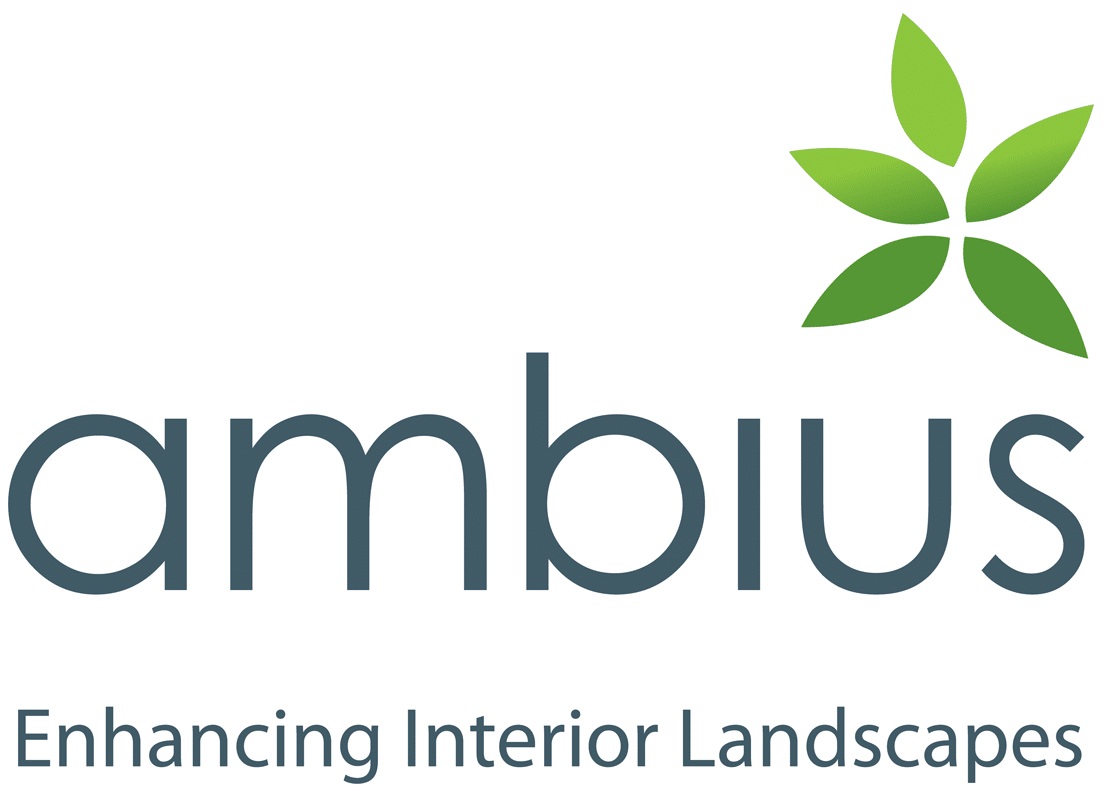Story at a glance:
- Employees and consumers expect more from the spaces where they spend their time.
- Ambius design experts have identified key trends commercial designers can use to enhance spaces.
- Plants blur the lines between functional and aesthetic and maximize the effect of biophilic design.
Design trends change over time, but emerging styles reflect a new chapter in a world that prioritizes modern comfort, fluidity, and social connection. Businesses of all shapes and sizes are turning a page from the well-manicured corporate aesthetics of the past by embracing a hybrid landscape that matches a more hybrid work life while also motivating, inspiring, and engaging.
The days of cubical farms and stale, stagnate offices are over. The office environment is now considered part of the overall wellness factor for employees and consumers who now expect more from the spaces in which they spend their time.
Business operators are turning to designers, seeking an enhanced environment that will allow more space between employees and consumers while creating an invigorating and relaxing atmosphere. It’s a shift that has become more than just a fad. The changing tides of green design are here to stay, and Ambius design experts have identified six key trends commercial designers can use to help enhance interior and exterior spaces.
1. Plant Immersion

Plant immersion is seen here at The Puttery. Photo courtesy of Ambius
Plants have always been important accents in commercial spaces; now they’re essential. Using plants to blur the lines between functional and aesthetic design can help maximize biophilic effects. Bring the outdoors in with overgrown, cascading moss walls, lush plant chandeliers, imposing potted species, and even planters built into furniture.
Large plant containers are multi-versatile in commercial spaces. They add so much more than a pop of color to interior spaces. Designers can use potted plants as space dividers to replace cubicles, as directional markers along lobbies and hallways, and even to help reduce humidity and dust levels if incorporating a high number of large plants.
In addition to the design versatility of potted plants, a high number of large indoor plants can enhance moods, reduce stress and fatigue, and improve overall well-being. A high number of larger plants that are actively growing can also help raise the relative humidity level in certain environments.
By increasing the relative humidity level, plants can have a relaxing effect on people, reduce dust, and remove allergy-inducing particles. Specifically, larger plants that are actively growing—like dracaenas, palms, ficus, and ferns—can help with air quality due to a high level of metabolism and photosynthesis. Designers simply can’t go wrong adding plants to interior spaces.
2. “Resimercial” Environments
Reproducing the comforts of home can make any business more inviting. “Resimercial” environments combine the best of residential and commercial environments. Small accents like throw pillows, blankets, and rugs create the familiar coziness of a residence in commercial spaces.
Natural textures and muted colors promote a warm, welcoming atmosphere; think leather, wood, terra-cotta, and blush. Plant containers are also a perfect vessel to introduce these visual elements while providing a home for vegetation and other green design pieces.
“Business as usual” may be a concept of the past as people are now seeking ways to connect with others when they leave home. Integrating versatile design elements like furniture on wheels, folding desks, soft seating, and portable green walls and dividers can provide quiet and privacy during work hours, while quickly transitioning into an open floor plan for group exercises or social experiences.
By making greenery mobile you can bring in the benefits of biophilia wherever and whenever they’re needed. Designers should consider generating a more fluid space between employees and consumers to create an invigorating and relaxing environment that can mimic the open concept floor plan of many modern homes.
3. Air Care
Green and clean go hand in hand in the changing tides of green design. People want greener, cleaner, and more sustainable environments and with that comes enhanced air care. Take air care through plant immersion a step further by adding access to natural airflow and air purification units.
The simplest way to improve stale, stagnant air is to bring in naturally flowing air through open doors and windows if environmental conditions allow. Updating the building’s HVAC is also a great resource for filtering air.
To ensure the HVAC system is running at full potential, work with a trusted service technician to understand what type of filter is needed. The HVAC minimum efficiency reporting value (MERV) rating, typically between 1 and 16 for most residential and commercial buildings, will define the unit’s filtration capability. When correctly fitted with the unit’s recommended MERV filter, an HVAC system can work to clean the air by effectively trapping smaller particles as they enter the room. Portable air purifiers help to additionally clean the air as it passes through the room, working as a supplement to the HVAC system.
Portable air purifying units equipped with HEPA filters, also referred to as medical grade filters, can remove dust, bacteria, viruses, mold, fungi, vapors, and more from the air. Medical grade filters act as an effective physical trap, pulling in contaminants from the real-time air after filtering out the pollutants the unit pushes out clean, purified air.
4. Relaxed Manicure
To continue with a more casual look and feel inside commercial spaces, business owners are starting to adopt a relaxed, manicured look for their interior plants and landscaping. The days of perfectly trimmed leaves and uniformity across the space are shifting to more casual designs.
Overgrown plants, opposing colors, and pairing containers of various shapes and sizes were once considered tacky, but in the changing tides of green design this sought-after trend is now considered a vibe.
The relaxed manicured look can also accommodate a wide range of budgets. Working with a small budget? Designers can focus on key first impression areas like the entryway or lobby to grab the attention of passersby. Does your budget have some wiggle room? Incorporate this look across all areas of the property to create one overall casually fluid layout.
5. Purposeful Creativity
Polished, uniform looks are fading, leaving room for creativity to flourish. Businesses are showcasing their unique personalities with custom-designed moss walls and plantscapes featuring geometric shapes, textured panels, and company logos.
These trends are attracting extra attention with customized neon signs, in-wall aquariums, dynamic lighting, nature soundtracks, green roofs, and other out-of-the-box elements. The rules are out the window when it comes to implementing a unique idea for the brand.
This is where business owners and designers can take brand design a step further to leave a one-of-a-kind lasting impression on consumers. Purposeful creativity will not only help brands stand out to their target audience; it can also give them a step up over the competition.
6. Practical Exteriors

Practical exteriors should include green design to give occupants the benefits of biophilia. Photo courtesy of Ambius
Weather and climate are the primary factors driving new trends in exterior design. Drought-tolerant landscaping plants like Statice and Lomandra Breeze can add new colors and textures in regions that are susceptible to severe heat and water scarcity. Cobblestone or decomposed granite can replace grass turf to reduce maintenance while still capturing the essence of biophilic design.
Business owners and designers can construct more defined outdoor spaces, parklets, and enclosed patios with planter borders. Another way to create practical exteriors is by enhancing the exterior landscaping, using rocks or potted plants, depending on the environment. These enhancements can be used to create separate one-way systems, with one pathway to enter the building and another pathway to exit.
Even in the smallest of spaces practical exteriors can be a great option for business owners to consider. For example, vertical or rooftop gardens can provide visitors with a mini oasis or escape from the sometimes closed-off and crowded common areas. Practical exteriors are all about adaptability, and business owners can work with designers to gain a better understanding of what works best in their unique space, climate, and environment.
These six factors center around improving the overall health and wellness of commercial spaces. The impacts of the built environment on humans are only just beginning to be understood, but the research is clear. The construction and design of buildings and structures people spend time in, as well as the systems used to provide essential services, have a dramatic influence on health and well-being. As awareness around these impacts rises, expectations of interior and exterior designs are changing.
These designs are meant to transition throughout a project’s lifespan. They are adaptable and can meet the needs of a wide variety of people. Creating a world-class design is about creating an exceptional experience. These tips can help guide the development of commercial spaces toward beneficial improvements in health, well-being, and the environment.


